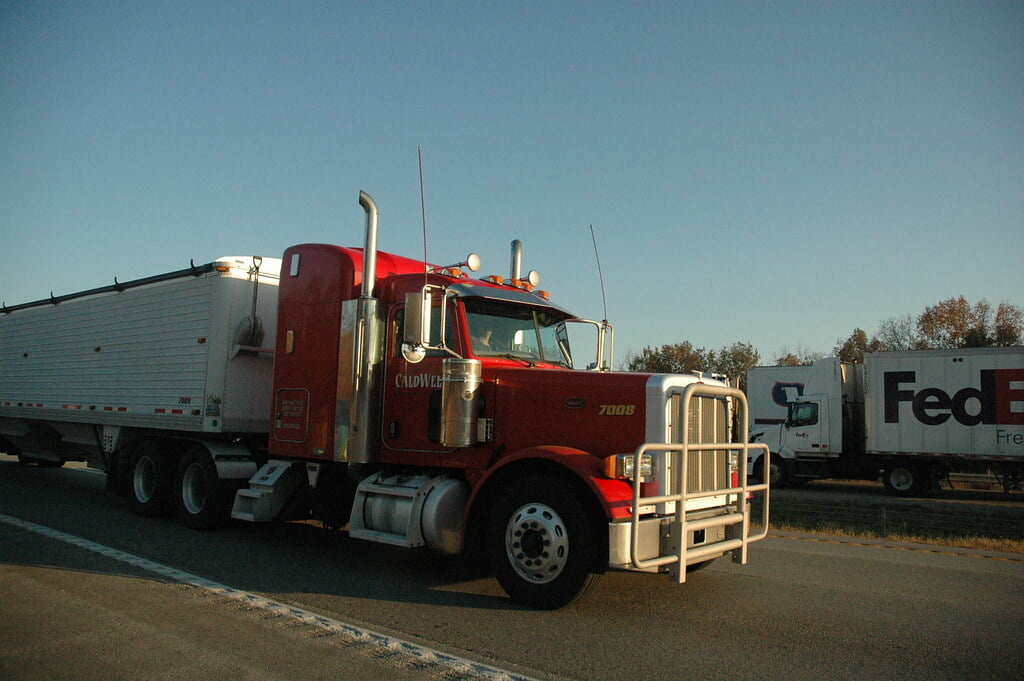How To Apply for Commercial Driver’s License Truck Driver Jobs In United States 2024

How to Apply for Commercial Driver’s License (CDL) Truck Driver Jobs in the United States
Obtaining a Commercial Driver’s License (CDL) is an essential requirement for pursuing a career as a truck driver in the United States. The CDL enables individuals to operate commercial vehicles, such as tractor-trailers, buses, and delivery trucks. This guide provides a step-by-step process for applying for CDL truck driver jobs in the United States, including relevant links and procedures. By following these guidelines, you can enhance your chances of securing a rewarding career as a professional truck driver.
Section 1: Researching CDL Requirements
Before embarking on your journey to become a CDL truck driver, it’s crucial to familiarize yourself with the various CDL classifications and state-specific requirements. The Federal Motor Carrier Safety Administration (FMCSA) defines the classifications, and each state may have additional requirements.
a. CDL Classification:
The three main CDL classifications are:
– Class A: This allows you to operate combination vehicles weighing over 26,001 pounds, with a towed vehicle weighing over 10,000 pounds.
– Class B: With this classification, you can operate single vehicles weighing over 26,001 pounds or towing vehicles weighing less than 10,000 pounds.
– Class C: This classification is for vehicles designed to transport 16 or more passengers or hazardous materials.
b. State-Specific Requirements:
Research the specific CDL requirements for your state, as some states may have additional endorsements or restrictions beyond the federal standards. Visit your state’s Department of Motor Vehicles (DMV) or equivalent agency website for detailed information.
Section 2: Meeting the CDL Eligibility Criteria
To pursue a CDL truck driver job, you must meet certain eligibility criteria established by the FMCSA and your state’s licensing authority.
a. Age Requirement:
You must be at least 18 years old to obtain a CDL for intrastate (within the state) driving. However, for interstate (across state lines) driving, the minimum age is usually 21. Note that individual trucking companies may have their own age requirements.
b. Medical Certification:
To ensure you are physically capable of safely operating a commercial vehicle, you will need to obtain a medical certificate. Schedule a physical examination with a certified medical examiner listed on the National Registry of Certified Medical Examiners.
c. Driving Record:
Review your driving record to ensure it meets the requirements set by your state’s DMV. Generally, a clean driving record without serious violations or recent suspensions will increase your employability.
Section 3: Preparing for the CDL Written Test
Before obtaining your CDL learner’s permit, you will need to pass the written test. Adequate preparation is key to success.
a. CDL Study Materials:
Numerous study materials are available to help you prepare for the written test. These include CDL manuals, practice tests, and online resources. The official CDL manual for your state can be obtained from the DMV or downloaded from their website.
b. CDL Practice Tests:
Taking practice tests is an excellent way to familiarize yourself with the test format and gauge your knowledge. Several websites offer free CDL practice tests that cover various topics, including general knowledge, air brakes, combination vehicles, and endorsements.
c. Written Test Locations:
Contact your local DMV or visit their website to find out the location and hours of operation for written tests. Many DMVs also offer online scheduling options.
Section 4: Obtaining a CDL Learner’s Permit
Before undergoing CDL training, you must obtain a CDL learner’s permit, also known as a CLP (Commercial Learner’s Permit).
a. Required Documentation:
Prepare the necessary documentation, which may include proof of identity, Social Security number, residency, and medical certificate. Check your state’s DMV website for the specific documents required.
b. Learner’s Permit Application Process:
Visit your local DMV and submit the required documents along with the completed application form. Pay the applicable fees, and take the written test for your desired CDL classification and endorsements.
c. Permit Testing:
Passing the written test(s) will grant you the CDL learner’s permit, allowing you to practice driving a commercial vehicle under the supervision of a licensed CDL holder.
Section 5: Enrolling in CDL Training Programs
Completing a comprehensive CDL training program is crucial for gaining the necessary skills and knowledge to excel as a truck driver.
a. Types of CDL Training Programs:
Different types of CDL training programs are available, such as private schools, community colleges, and company-sponsored training. Consider your budget, location, and training requirements when choosing a program.
b. Choosing a Reputable Training Provider:
Research and select a reputable CDL training provider that offers comprehensive instruction and practical experience. Look for programs that are accredited, have experienced instructors, and offer job placement assistance.
c. Financial Assistance:
Explore potential financial assistance options, such as grants, scholarships, or employer-sponsored programs. Some trucking companies may reimburse your training expenses in exchange for a work commitment.
6. Finding Truck Driver Jobs:
There are various ways to find truck driver jobs:
– Online job platforms and websites specific to the trucking industry.
– Company websites where you can apply directly for open positions.
– Local newspapers and classified ads.
– Networking within the industry.
– Attending job fairs and industry-specific events.
7. Online Job Platforms and Resources:
Utilize the following online platforms to
search for truck driver jobs:
– Indeed (www.indeed.com)
– Monster (www.monster.com)
– CDLjobs.com (www.cdljobs.com)
– TruckingTruth (www.truckingtruth.com)
– DriveMyWay (www.drivemyway.com)
6. Applying for Truck Driver Jobs:
a. Resume Preparation:
Create a professional resume that highlights your relevant experience, skills, and qualifications. Include your CDL information, driving experience, endorsements, and any specialized training you’ve received.
b. Application Submission:
Submit your applications through the company’s official website or online job platforms. Ensure that you provide accurate and up-to-date information.
c. Interview Process:
Prepare for interviews by researching the company, practicing common interview questions, and showcasing your knowledge and passion for the trucking industry. Dress professionally and be ready to provide references and any additional documentation requested.
7. Additional Resources and Tips:
– Department of Transportation (DOT) Federal Motor Carrier Safety Administration (FMCSA): www.fmcsa.dot.gov
– Professional Truck Driver Institute (PTDI): www.ptdi.org
– TruckersReport (www.thetruckersreport.com): Online community for truck drivers with valuable information and resources.
Tips:
– Maintain a clean driving record and comply with all traffic laws and regulations.
– Consider joining industry associations and organizations like the American Trucking Associations (ATA) for networking and career development opportunities.
– Keep abreast of industry news, trends, and changes in regulations.
8. Conclusion:
Applying for commercial truck driver jobs in the United States involves obtaining a CDL, finding suitable job opportunities, and submitting applications. By following the outlined steps, utilizing online resources, and preparing for interviews, you can increase your chances of securing a truck driver job. Remember to stay updated with current regulations and industry practices to excel in your career.
PS: If you need more details finding jobs apart from truck drivers you check it out here



